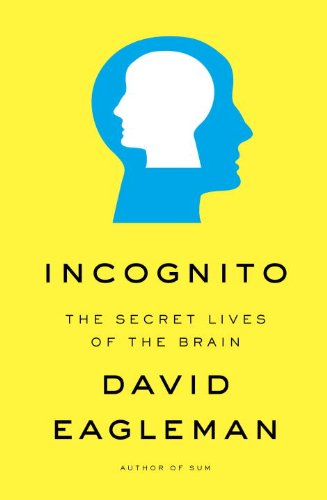The Future of Being Human from Being Human on FORA.tv
In this session, we examine how the contemporary journey into massive scales of space, time, and big data irreversibly expands our perspective on ourselves-and how medical innovations which allow us to move past our traditional human bodies will change our cares and our consciousness.
 | Session led by: David Eagleman, Ph.D.; Neuroscientist, Baylor College of Medicine |
 | Natasha Vita-More, Ph.D.; Designer and Theorist |
 | Jer Thorp; Data Artist |
Dr. David Eagleman
David Eagleman is a neuroscientist best known for his work on time perception, synesthesia, and the intersection of neuroscience and the legal system. His book, Incognito: The Secret Lives of the Brain, explores the neuroscience under the hood of the conscious mind—in other words, all the aspects of neural function of which we have no awareness or access. As he says, “It turns out your conscious mind — the part you think of as you — is really the smallest part of what’s happening in your brain, and usually the last one in line to find out any information.” Eagleman dismantles the common perception that the brain acts as a unified whole, instead pointing out that the brain is governed by a “band of rivals”: many different systems with conflicting goals. This band of rivals manages to work together thanks to a figurative overseer that we call the self. Eagleman is also passionate about how neuroscience challenges fundamental notions at the heart of our criminal justice system. Given that we are not in conscious command of most of the brain networks controlling our behavior, how can we be held responsible for our actions? Eagleman argues that the only rational course is to ask “What can we do from here?” and to create customized sentencing, tailored rehabilitation, and refined incentive structuring. In 2012, he spoke at the Being Human conference in San Francisco.
Jer Thorp
Jer Thorp is an artist and educator from Vancouver, Canada, currently living in New York. Coming from a background in genetics, his digital art practice explores the many-folded boundaries between science, data, art, and culture. Recently, his work has been featured by The Guardian, Scientific American, The New Yorker, and Popular Science. Thorp’s award-winning software-based work has been exhibited in Europe, Asia, North America, South America, including in the Museum of Modern Art in Manhattan.
Jer is an adjunct Professor in New York University’s ITP program, and a member of the World Economic Forum’s Global Agenda Council on Design Innovation. He is a co-founder of The Office For Creative Research, a multi-disciplinary research group exploring new modes of engagement with data. From 2010 – 2012, Jer was the Data Artist in Residence at the New York Times.
Natasha Vita-More
Natasha Vita-More, is a designer and author whose research concerns human enhancement and radical life extension. Dr. Vita-More designed the pioneering “Primo Posthuman” prototype and “Platform Diverse Body." She is co-editor and contributing author of The Transhumanist Reader: Classical and Contemporary Essays on the Science, Technology, and Philosophy of the Future Human. Her writings have been published in numerous books and academic journals such as Technoetic Arts, Evolution haute couture, Metaverse Creativity, New Realities: Being Syncretic, Beyond Darwin, and D’ARS.
Wired called Vita-More an "early adopter of revolutionary changes" and Village Voice claimed she is "a role model for superlongevity." Featured in LAWeekly, The New York Times, and U.S. News & World Report, Vita-More has appeared in numerous televised documentaries on the future. She received Special Recognition at Women in Video and has exhibited at the London Contemporary Art Museum, Niet Normaal, and the Moscow Film Festival. Dr. Vita-More is an adjunct professor at the University of Advancing Technology.




No comments:
Post a Comment